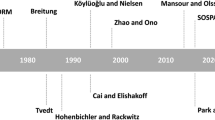Abstract
Safety-critical real-time standards define several criticality levels for the tasks. In this paper we consider the real-time systems designed under the DO-178B safety assessment process (i.e., Software Considerations in Airborne Systems and Equipment Certification). Vestal introduced a new multiple criticality task model to efficiently take into account criticality levels in the schedulability analysis of such systems. Such a task model represents a potentially very significant advance in the modeling of safety-critical real-time softwares. Baruah and Vestal continue this investigation, with a new scheduling algorithm combining fixed and dynamic priority policies. Another major design issue is to allow a system developer to determine how sensitive is the schedulability analysis to changes in execution time of various software components.
In this paper, we first prove that the well-known Audsley’s algorithm is optimal for assigning priorities to tasks with multiple criticality levels. We then provide a proof on the optimality of Vestal’s algorithm for optimizing the resource requirements to schedule tasks with multiple criticality levels. We then present a sensitivity analysis for multiple criticality tasks that is based on Bini et al. results on sporadic tasks.
Similar content being viewed by others
References
ARINC: Avionics application software standard interface. ARINC Spec 653 (1997)
Audsley N (1991) Optimal priority assignment and feasibility of static priority tasks with arbitrary start times. Technical report YCS 164, Dept. Computer Science, University of York, UK
Audsley N, Burns A, Richardson M, Tindell K, Wellings AJ (1993) Applying new scheduling theory to static priority pre-emptive scheduling. Softw Eng J 8:284–292
Authority F (1992) Software considerations in airborne systems and equipment certification. RTCA Inc: EUROCAE
Balbastre P, Ripoll I, Crespo A (2009) Period sensitivity analysis and d-p domain feasibility region in dynamic priority systems. J Syst Softw 82:1098–1111
Baruah S, Li H, Stougie L (2010) Scheduling for certifiability in mixed criticality systems. In: The real-time technology and applications symposium. Pre-publication
Baruah S, Vestal S (2008) Schedulability analysis of sporadic tasks with multiple criticality specifications. In: ECRTS ’08: Proceedings of the 2008 Euromicro conference on real-time systems. IEEE Comput Soc, Washington, pp 147–155
Bini E, Buttazzo G (2004) Schedulability analysis of periodic fixed priority systems. Comput IEEE Trans 53(11):1462–1473
Bini E, Buttazzo G (2009) The space of EDF deadlines: the exact region and a convex approximation. Real-Time Syst 41:27–51
Bini E, Di Natale M, Buttazzo G (2008) Sensitivity analysis for fixed-priority real-time systems. Real-Time Syst 39(1–3):5–30
Bougueroua L, George L, Midonnet S (2007) Dealing with execution-overruns to improve the temporal robustness of real-time systems scheduled fp and edf. In: The second international conference on systems (ICONS’07)
Joseph M, Pandya P (1986) Finding response times in a real-time system. Comput J 29(5):390–395
Katcher D, Arakawa H, Strosnider J (1993) Engineering and analysis of fixed priority scheduler. IEEE Trans Softw Eng 19(9):920–934
Klein M, Ralaya T, Pollak B, Obebza R, Harbour M (1993) Guide to rate monotonic analysis for real-time systems. Kluwer Academic, Norwell
Lehoczky J (1990) Fixed priority scheduling of periodic task sets with arbitrary deadlines. In: Proceedings of the 11th real-time systems symposium, pp 201–209
Lehoczky JP, Sha L, Ding Y The rate monotonic scheduling algorithm-exact characterization and average case behavior. In: Real-time system symposium (1989)
Liu CL, Layland JW (1973) Scheduling algorithms for multiprogramming in a hard-real-time environment. J ACM 20(1):46–61
Punnekkat S, Davis R, Burns A (1997) Sensitivity analysis of real-time task sets. In: Advances in computing science, LNCS, vol 1345, Springer, Berlin, pp 72–82
Racu R, Hamann A, Ernst R (2008) Sensitivity analysis of complex embedded real-time systems. Real-Time Syst 39:31–72
Sha L, Lehoczky JP, Rajkumar R (1986) Solutions for some practical problems in prioritized preemptive scheduling. In: Proceedings IEEE real-time systems symposium. IEEE Comput Soc, Los Alamitos, pp 181–191.
Vestal S (1994) Fixed-priority sensitivity analysis for linear compute time models. IEEE Trans Softw Eng 20(4):308–317
Vestal S (2007) Preemptive scheduling of multi-criticality systems with varying degrees of execution time assurance. In: RTSS ’07: proceedings of the 28th IEEE international real-time systems symposium. IEEE Comput Soc, Washington, pp 239–243
Author information
Authors and Affiliations
Corresponding author
Rights and permissions
About this article
Cite this article
Dorin, F., Richard, P., Richard, M. et al. Schedulability and sensitivity analysis of multiple criticality tasks with fixed-priorities. Real-Time Syst 46, 305–331 (2010). https://doi.org/10.1007/s11241-010-9107-4
Published:
Issue Date:
DOI: https://doi.org/10.1007/s11241-010-9107-4




